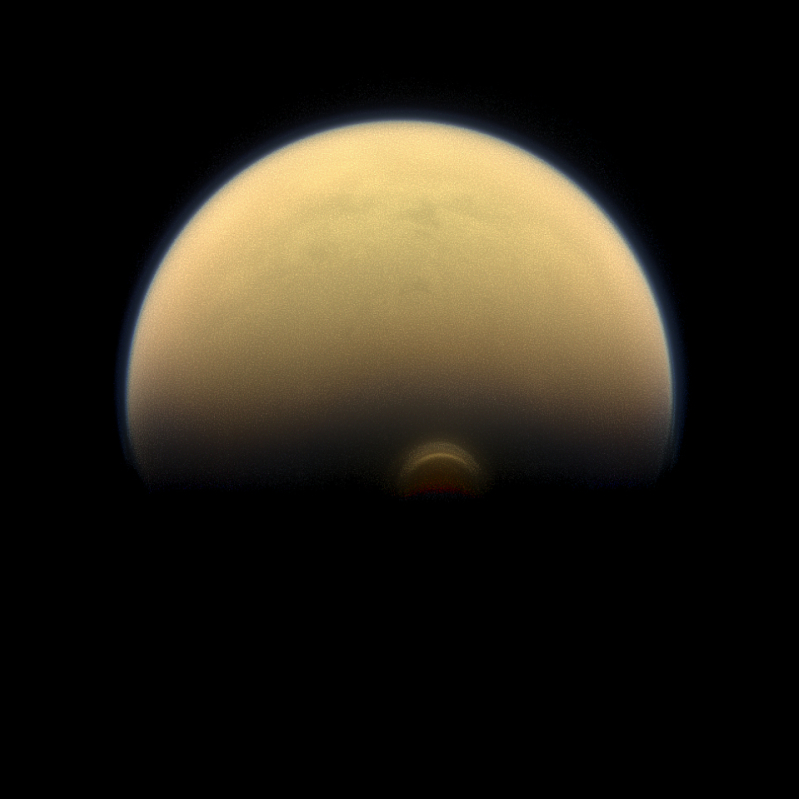
NASA' Cassini spacecraft has discovered a gigantic, never-before-seen cloud hovering at the South Pole region of Saturn's moon Titan. The icy cloud gave clues about extreme weather conditions on the moon.
The monstrous ice cloud brings extremely cold temperature on Titan at about minus 238 degrees Fahrenheit. The data was gathered by Cassini spacecraft, which is equipped with instruments that can detect thermal wavelengths invisible to the human eye.
Estimates from Cassini's instrument show the cloud is hovering at nearly 60 miles lower than the last time it was observed in 2012. Three years ago, the cloud was at an altitude of about 186 miles (300 kilometers) above the moon's South Pole.
"When we looked at the infrared data, this ice cloud stood out like nothing we've ever seen before," Carrie Anderson, a scientist at the NASA's Goddard Space Flight Center in Maryland, said in a statement.
Anderson presented the latest Cassini finding at the 47th annual meeting of the American Astronomical Society's Division of Planetary Sciences in Oxen Hill, Maryland.
Aside from Earth, Titan is the only object in the solar system that has a stable amount of liquid on its surface. The moon has thick, nitrogen-dominated atmosphere.
Compare to the water here on Earth, the liquid in Titan is composed of ethane and methane. Water is essential in the development of life in a planetary object, so the moon is the solar system's best bet to host alien life, according to most scientists.
Scientists from NASA said the icy cloud is composed of hydrogen, carbon and nitrogen, each of which changes from a gaseous to a liquid state at a different temperature.
Cassini arrived at Saturn in 2004. It was midwinter in the north polar region of the planet and midsummer for the south that time. Estimates show each of Titan's season lasts approximately 7.5 Earth years. However, based on the latest observation in the icy cloud, the moon's winter could be longer than expected.
Ice clouds around the moon's North Pole are now moving as spring arrives while the icy clouds in the South Pole have been forming.
"The opportunity to see the early stages of winter on Titan is very exciting," said Robert Samuelson, co-researcher of the study from Goddard.
Cassini spacecraft has two more years to investigate the moon before its mission expires in 2017.







